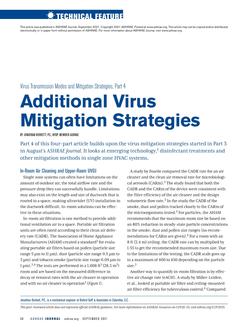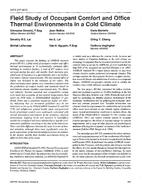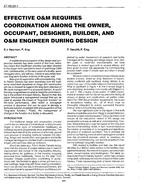Click here to purchase
Although often garnering scant attention, commercial unitary HVAC systems, such as rooftop air conditioners, are estimated to consume0.88 quads of energy annually, or about 46% of commercial building cooling site energy consumption, and are used to cool over 60% of allcommercial space in the U.S. The as-installed energy efficiency of unitary systems can be half that of central systems, and the efficiency gapwidens as systems age due to maintainability issues. When tuning systems, energy engineers and service technicians use indirect indicators ofequipment performance and make adjustments according to manufacturer guidelines and standard field practice, which varies with their levelof experience. Growing numbers of unitary systems combined with shrinking budgets result in deferred maintenance, and long-termoperation of equipment at degraded levels. Energy efficiency is a metric that must be measured to be optimized. This paper reports on fieldtesting of continuous sensing of operating energy efficiency to control unitary equipment operating parameters, provide remote fault detectiondiagnostics, and support maintainability. Optimization systems were installed on package units at three sites in diverse climate locations:Cape Canaveral, FL; Mojave Desert, CA; and Beaufort, SC. The systems utilize a relational control strategy to continuously maximizethe ratio of cooling delivered versus power consumed as operating conditions vary over a day and across seasons, and as components degradeover time. Condenser fan speed, supply airflow, evaporator temperature, outside airflow, and refrigerant charge were continuously adjustedby the system to maintain a state of optimized operation. The systems successfully detected and attempted to compensate for faults such aslow refrigerant charge or condenser coil fouling, and reported operating EER, pressures, temperatures, and efficiency degradation to servicetechnicians in an actionable way. Analysis of resulting data from the field tests shows considerable unitary energy efficiency gains andmaintenance improvements can be obtained cost effectively.
Citation: 2016 Winter Conference, Orlando, FL, Conference Papers
Product Details
- Published:
- 2016
- Number of Pages:
- 8
- Units of Measure:
- Dual
- File Size:
- 1 file , 1.4 MB
- Product Code(s):
- D-OR-16-C038


